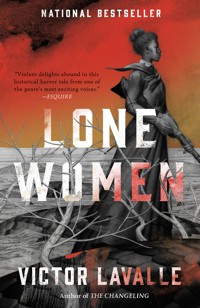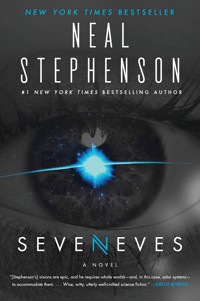Six Books That Explore What’s Out There
These titles reflect on what drives our species to seek out the uncharted and unknown.

Humans have always been explorers. For better or worse, something in our collective makeup seems to push us to discover new things, understand the enigmatic, or reach past the limits of what we imagine is possible. Some people dream about what the cosmos could contain; scientists launch probes into space, and astronauts travel beyond Earth’s atmosphere. Others go on life-threatening quests, such as climbing the planet’s tallest peaks and diving into the sea’s deepest trenches, to tap into the wonder, fear, and awe that come from experiencing—and surviving—the places on Earth most hostile to human life.
The six books below reflect on what drives our species to seek out the uncharted and unknown. In each, what propels an individual’s desire to expand their experiences differs; some stories follow people yearning for adventure or to set a record, while other protagonists turn to exploration when they want to run away from something. No matter where these books take us, whether they cover searching for life beyond our planet or diving miles deep into the ocean to discover ecosystems heretofore unknown, their pages bring readers along for the ride.

Contact, by Carl Sagan
In Sagan’s 1985 novel, the astronomer Ellie Arroway is the leader of a scientific endeavor called Project Argus, a network of radio telescopes that picks up a message from an extraterrestrial source. The missive includes blueprints to build a machine that can take a group of humans … somewhere. Sagan’s story weaves Ellie’s personal life, particularly her relationship with her parents, together with Earth’s many competing efforts to build (or destroy) a working version of this machine. Though the novel doesn’t shy away from humanity’s propensity to sow discord and violence, Sagan’s story has a through line of hope—Contact is ultimately about how people’s tendency to seek the unknowable can lead them to better understand themselves and others. By the end of the novel, Ellie—who has traveled to the stars and back—realizes that “for small creatures such as we the vastness is bearable only through love.” This message resonates nearly four decades later, as humans wade farther and farther into the galaxy.

The Underworld: Journeys to the Depths of the Ocean, by Susan Casey
For all of humanity’s stargazing, the deepest trenches of Earth’s oceans remain relatively unexplored. Many people consider the sea “the earth’s haunted basement—sinister, shrouded in blackness, spewing molten rock and poisonous gases, a den of freaky beings and hoary specters—and they would rather stay upstairs,” Casey writes in her book about those who do seek to journey to the bottom of the sea, where “intraterrestrial” life thrives. Casey herself is one of those people, and in The Underworld, she showcases others whose vocations send them into the ocean’s depths. But the book isn’t only about humans: Equal time is given to the creatures that live down there—including animals that aquanauts have given flippant monikers to, such as assfish, snailfish, weirdfish, and rattails—and underwater natural phenomena, such as black smoker hydrothermal vents, chimneylike structures that spew a sulfide-rich “smoke” into the water. Through Casey’s research, interviews, and firsthand experience, readers journey to the abyssal and hadal zones of the ocean, which run 10,000 to 36,000 feet deep, and get to share the “alchemical mix of wonder and fear” the author finds there.
Read: The Titanic sub and the draw of extreme tourism

Lone Women, by Victor LaValle
Exploration isn’t always about running toward something—at times, it’s about running away from something else. Lone Women uses the trappings of the American West, a complicated, enduring cultural symbol of a supposedly untouched frontier, to delve into the human tendency to try to escape the past. It follows Adelaide Henry, a Black woman who leaves her family's California farm in 1915 under violent circumstances and lugs a mysterious trunk to Montana, where the U.S. government is offering free land to those who homestead there. The trunk’s undisclosed, possibly supernatural contents disturb Adelaide, and seem directly related to what she’s trying to leave behind. Over the course of the book, we see her failed attempt to shut that part of her past away as she tries to build a life in the brutal landscape of the Great Plains, a place that can destroy anyone who’s unprepared or without friends—or be a refuge for those looking to build a new home with space for the love, and suffering, that comes with living.
Read: The ‘curious’ robots searching for the ocean’s secrets

The River of Doubt: Theodore Roosevelt’s Darkest Journey, by Candice Millard
Teddy Roosevelt lived his life by fighting his way through it, pummeling any hardships or setbacks with relentless action and an indomitable force of will. In 1912, he lost a presidential election that would have given him a third term. The defeat devastated him, and—as he was wont to do—he sought an endeavor that would put his mental and physical limits to the test. He decided on an expedition to an unmapped expanse of land in South America, which to North Americans represented an alluring, seemingly impenetrable wilderness. Once he landed in Brazil, he was persuaded to explore an Amazonian tributary ominously and aptly called the River of Doubt. “If it is necessary for me to leave my bones in South America, I am quite ready to do so,” he wrote. Roosevelt did, in fact, almost die on that trek. He and the men who accompanied him were, “for all their own experience and knowledge, vulnerable outsiders,” Millard writes. She goes on to describe how their hubris on that journey made them “clumsy, conspicuous prey” at the mercy of not only the Cinta Larga tribe, whose members shadowed them throughout and could have killed them easily if they’d decided to, but also the flora and fauna they knew little about. The River of Doubt is a riveting look at how exploration can be laden with arrogance and ignorance. Millard vividly recounts how Roosevelt brought both with him into the Amazon, and how much both cost him.
Read: The difference between exploring and tourism

Into the Wild, by Jon Krakauer
In April 1992, a 24-year-old man named Chris McCandless walked into the wilds three hours outside Fairbanks, Alaska, intent to live off the land without any modern conveniences. “I don’t want to know what time it is. I don’t want to know what day it is or where I am. None of that matters,” he told the man who dropped him off at the edge of the bush. McCandless never made it out—he died in the home he’d made in an abandoned bus sometime that August. His journey was reckless—he was unprepared in terms of both supplies and the knowledge of how to survive. His story, which Krakauer first recounted in an article for Outside magazine, angered many: How could McCandless have been so foolhardy? (Krakauer’s account also doesn’t capture all of his subject’s life: Chris’s sister Carine alleged years later that their parents had physically and mentally abused both children; they called her memoir “fictionalized.”) McCandless, however, was confounded by people passively staying within the confines of a civilization that he found crushing. Krakauer’s recounting of his final months is captivating, giving readers a window into McCandless’s mentality; it is a tragic portrait of a man whose urge to escape into nature was so strong and alluring that, decades later, the circumstances of his death have morphed into legend.

Seveneves, by Neal Stephenson
At certain moments, the impetus to go somewhere new isn’t about gaining knowledge or traveling simply for the novelty: Sometimes, it’s the only way to survive. In Seveneves, the moon explodes, making Earth uninhabitable for humans. The bulk of the story centers on the 1,500 or so people who struggle in the aftermath of the disaster, living initially in ad hoc habitats built around the International Space Station. Most of them die in these first years, destroyed by mounting internal discord and by the struggle to gain the basic resources—water, air, food—required for life. Stephenson goes deep into the science of their attempts to make it, and the book will fire up anyone who, for example, wants to know in detail how humans might be able to capture water from a passing ice comet. Ultimately, only seven women able to bear children remain, and they later set up base in a cleft of the broken moon. Then, about two-thirds of the way through the book, the action leaps 5,000 years into the future, where a civilization with billions of genetically altered humans seeks to reclaim Earth. Stephenson’s considerable extrapolations about what humans—or their genetically altered future descendants—will do to survive make the novel a fun, philosophical, and surprisingly hopeful read.
What's Your Reaction?




















